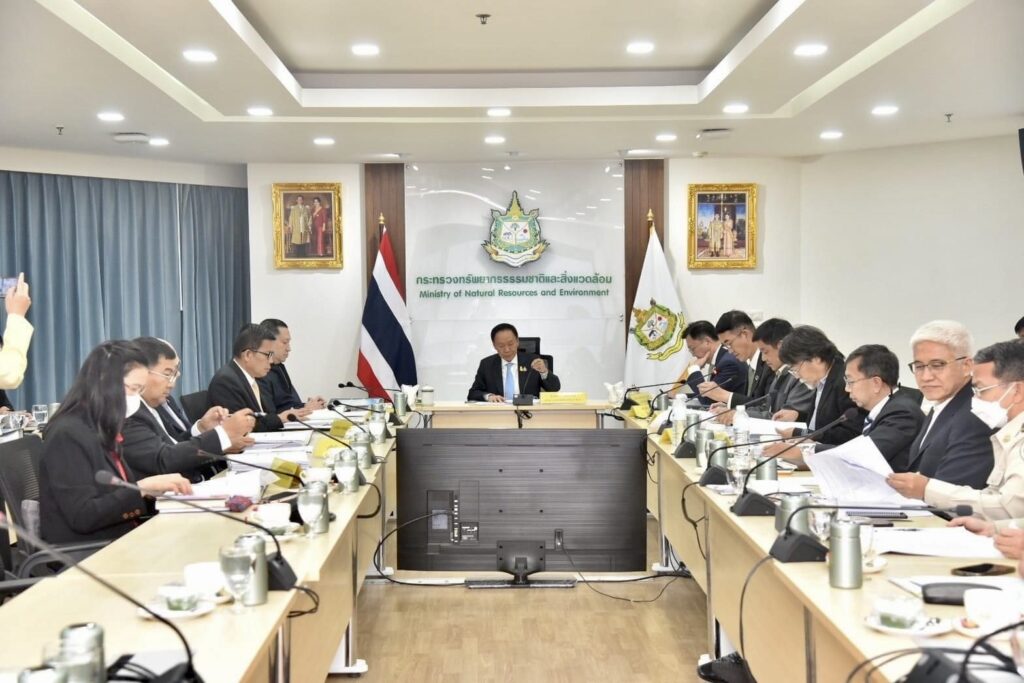The National Parks Committee (NPC) held its first meeting on Thursday and decided to bypass the proper forest boundary adjustment process for Thap Lan National Park which could prompt it to lose the forestland of over 260,000 rai, the act which apparently overrules the rule of law that repeats previous resolutions and decisions made by other state committees and agencies concerned. They all owe the public a clear explanation as to why
The National Parks Committee held its first meeting this year on Thursday with an agenda that stunned conservationists. It is the re-delineation for the boundary of Thap Lan National Park, part of the Dong Phayayen-Khao Yai World Heritage Site and the country’s second-largest national park of almost 1.4 million rai that has been plagued with extensive claims over overlapping areas and encroachment with the highest number of legal and court cases, over 400, so far.
The NPC’s intention to bring the issue to its meeting seems to be another attempt to end this long-standing issue, but what makes it stunning is the fact that the body decided not to put it for consideration by its members as required by the law, the National Parks Act BE 2562. Instead, it placed the issue under the agenda for “acknowledgement”, cutting short comprehensive consideration and discussion among the committee members, who are authorised by the law to make recommendations on such an issue.
Under the law, any adjustments on boundary lines or revocation or expansion of national park areas must pass this process before an Environment Minister will propose the committee’s resolution to the Cabinet for approval and a Royal Decree will be issued to endorse it.
The NPC, chaired by a new Environment Minister, Pol Gen Patcharawat Wongsuwan, just bypassed this process and swiftly ended the matter with the decision that did not pass any thorough scrutiny from the members.
“Please take note of their opposing views,” Pol Gen Patcharawat was heard speaking out briefly to a few NPC members who expressed their opposition at the meeting.
What has not come out from the Environment Minister yet is the reason why the NPC he chairs decided to deal with the issue this way, and the public has every right to demand answers from the minister.
First and foremost, this could be the decision that results in the loss of the largest forest patch in the modern history of the country’s forest management. If approved, Thap Lan could lose its forest area of over 260,000 rai at one time due to the change of its boundary. More critically, this can have a far-flung implication on the boundaries and statuses of other national parks nationwide.
Second, the state proposals and resolutions related to the issue are full of questions that have no clear answers for the public either, and again, the public has every right to know. The re-delineation of Thap Lan’s boundary based on the draft boundary line BE 2543 (2000) is based on the proposal proposed by the Ombudsman, who claims to have received complaints from the residents in the conflicting area in 2011 and 2018.
According to its clarification, the Ombudsman said the existing national park boundary exaggeratedly included the residential areas when it was first declared in 1981. So, this must be resolved following the April 22 BE 2540 Cabinet Resolution that focuses on the adjustment of forest boundaries as a solution (The resolution also addresses this approach, especially to Thap Lan). However, the June 30 BE 2541 Cabinet Resolution, which addresses a new directive to deal with overlapping claims in forest areas between the state and residents via the land rights verification process and endorsement of land use rights, already nullified the April 22 Resolution.
The committee on state land conflict resolution, chaired by former Deputy PM Gen Prawit Wongsuwan, in January 2021 decided to dismiss the Ombudsman’s proposal, citing the reason that it could rather cause damage to the state as the land there had extensively changed hands. The original purpose of land use shifted from farming to resort and property development, and a number of legal cases were taken as a result.
The committee also acknowledged the June 30 BE 2541 Cabinet Resolution’s approach as a solution for land rights conflict in forest areas, partly because of its legislative status through promulgating the new National Parks Act BE 2562. It informed the Prayut Cabinet, but the Cabinet just one month later, on February 2, acknowledged the Ombudsman’s proposal and instructed the Environment Ministry to take it up.
Since, the Ombudsman’s proposal has become part of the proposals made by various state committees and agencies concerning the issue including the Office of National Land Policy Board (ONLB), which eventually proposed the proposal to the Prayut Cabinet to endorse on March 14 last year shortly before it left the office. This was eventually brought to the NPC’s table on Thursday.
Among critical questions is the OLPB’s decision to waive the June 30 BE 2541 Cabinet resolution’s clause, which addresses in its Article 2.1 that “the state shall not allocate state forest land protected under the forest laws and cabinet resolutions for agricultural land reform”. This is especially exempt for Thap Lan National Park, which is protected under the National Parks Act BE 2562.
In conclusion, the state resolutions and decisions over the issue seem to run counter to each other and overrule the rule of law time and again. Concerned bodies and agencies owe the public a clear explanation as to why. This is the public interest indeed as the forests belong to us all.
Let’s start first with the NPC’s Chair and the Environment Minister, Pol Gen Patcharawat Wongsuwan_as to why his NPC bypassed the proper and legitimate process.
Indie • in-depth online news agency
to “bridge the gap” and “connect the dots” with critical and constructive minds on development and environmental policies in Thailand and the Mekong region; to deliver meaningful messages and create the big picture critical to public understanding and decision-making, thus truly being the public’s critical voice


